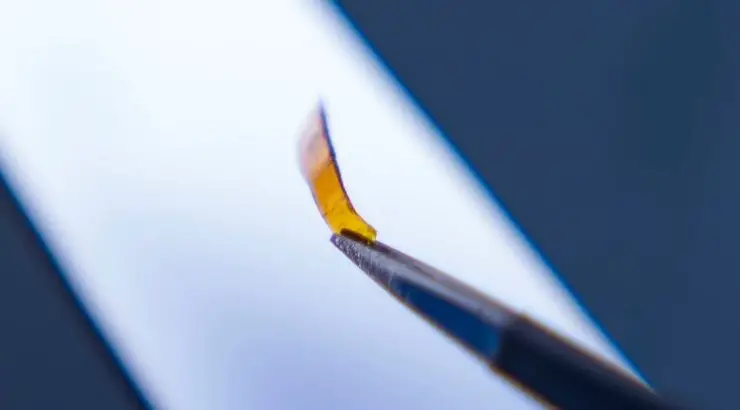Science & Tech
Scientists Create Artificial Flesh That Heals Itself Like Real Skin
Artificial flesh is growing closer to the real thing.

(TMU) — Scientists have tried for a long time to recreate human abilities artificially, such as in the case of artificial intelligence—AI—which has recently taken big steps by using hardware for deep learning and neural networks to imitate the synapse process in the human mind.
We’ve also got to the point where bionic eyes and bionic leg prostates are not astounding news, but just like every human invention, there is room for improvement. This is what scientists in Australia claim to have achieved with a new kind of artificial flesh, creating a “synergistic” version of it.
In their paper, the researchers had this to say about their aim to reach synergy:
“Achieving multifunctional shape-changing hydrogels with synergistic and engineered material properties is highly desirable for their expanding applications, yet remains an ongoing challenge. The synergistic design of multiple dynamic chemistries enables new directions for the development of such materials.”
They explain what this new artificial flesh is capable of:
“This approach utilizes simple and scalable chemistries to produce a doubly dynamic hydrogel network, which features high water uptake, high strength and toughness, excellent fatigue resistance, fast and efficient self-healing, and superfast, programmable shape-changing.”
Up until now, we only had hydrogels that could withstand mechanical stress, others with self-healing properties, and a few more with abilities to memorize shapes or change colors.
No one else, as far as the Australian National University researchers know, has been able to incorporate all these functions into one all-encompassing gel. This incorporation may be huge for the development of next-generations soft robotics and biomedical devices.
Furthermore, one of the key features of this new artificial flesh is the ability to be malleable under the application of stress, even under temperature changes, returning to its original shape, just like human flesh. We could even say that, in a way, Young’s Modulus (the measure of the ability of a material to withstand changes in length when under lengthwise tension or compression) of the human flesh was perfectly imitated, making an analogy with material mechanics.
Another characteristic of this new hydrogel is that unlike many other hydrogels, it only takes around 10 seconds for it to bend whereas its predecessors were in the 10 minute range. The key here is the gel’s dynamic hydrogen bonds and dynamic imine bonds.
There are high hopes for these materials, including the vast room for improvement. The authors say that if other polymers are added to the molecular mix, even more functions can be achieved.
As a summary, in the researcher’s own words:
“…we have developed an innovative but simple molecular design strategy to prepare a dynamic hydrogel with several superior material properties including strength, toughness, fatigue resistance, self-healing, rapid shape changing, and memory effect. Importantly, our designs reveal a successful balance between these often opposing properties into advanced materials with a combination of excellent material properties…”
The team hopes to someday turn their hydrogel into a 3D-printable ink.
Typos, corrections and/or news tips? Email us at Contact@TheMindUnleashed.com
